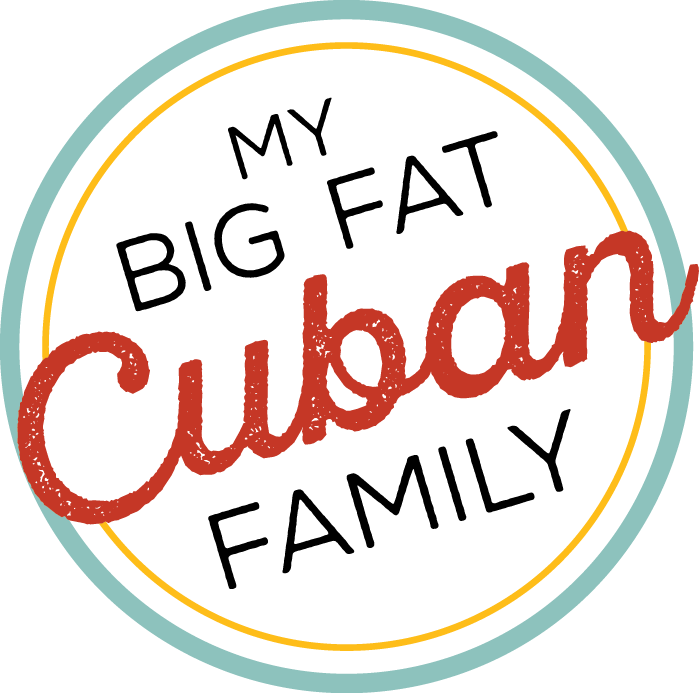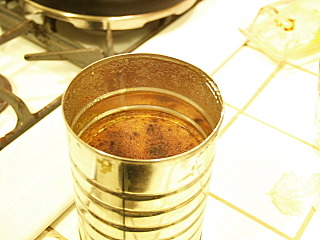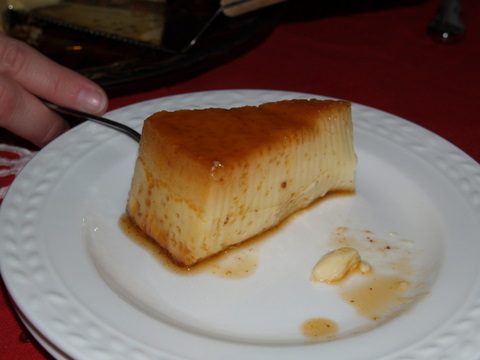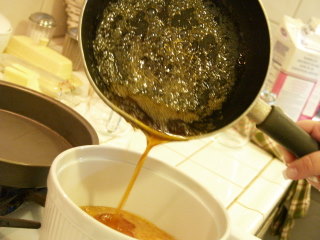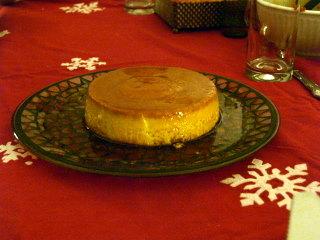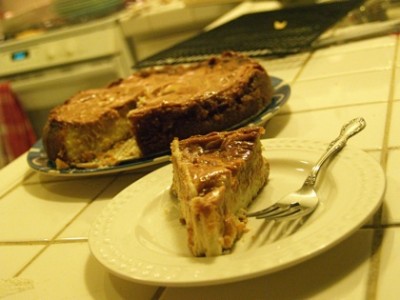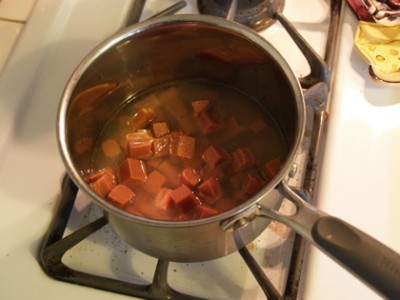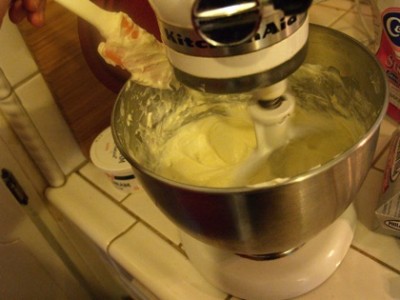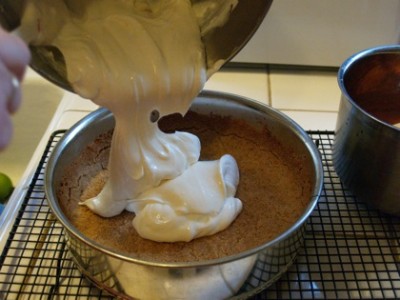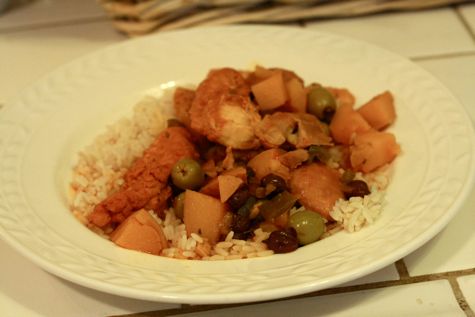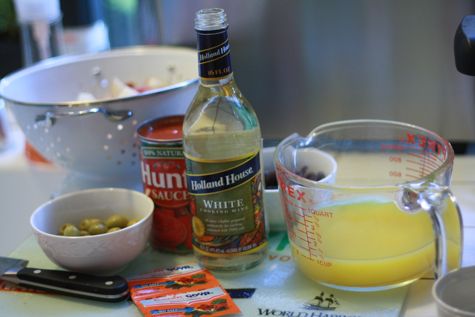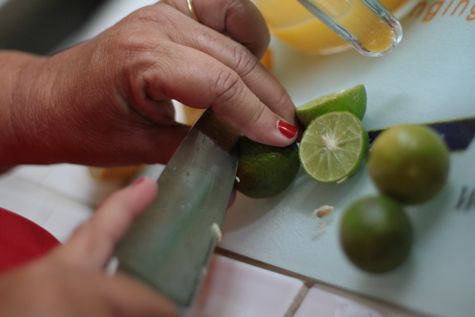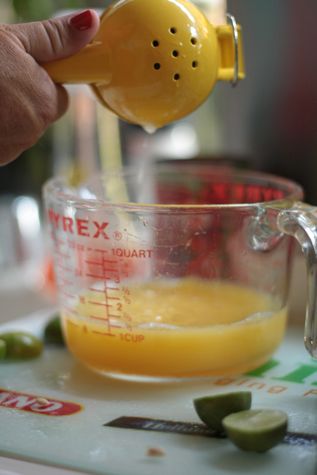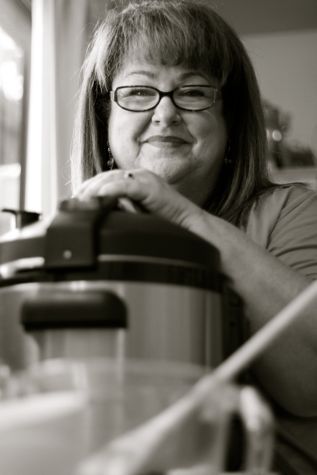Cuban Flan Recipe de La Reina
/My mom calls herself La Reina del Flan (which would make me the Reigning Princess of Egg Custard, but that’s not important right now). On Christmas Eve, we sometimes have other desserts along with it, but in my big, fat, Cuban family, my mom’s flan is a given.
I have a ritual I go through every Christmas with her. She’s 99 now and even though she’s moving slower these days, she’s still sharp as a tack and is a wonderful storyteller. I invite her over to help me make a flan.
This is her specialty and, of course she insists I can’t make a proper flan without her.
She comes and watches me carefully as I start cooking the sugar to make the caramel, instructing me to make sure the color is a golden brown, although, she will always remind me, some people like it a little on the darker side, but not quite burnt.
I usually double the recipe so that I fill one mold and then I have a clean coffee can I use to make a smaller flan. I know I can probably find a smaller mold, but there’s a reason I use the can. When she sees the can, it reminds her of her own mother and so she begins to tell me the story of how my grandmother would make a flan every single night for my grandfather.
It was around 1930 when they lived in the small port town of Manati, Cuba. She points to this framed photo I have of her family to illustrate the time and place. (My mom is the one in the back row with the Wilma Flinstone necklace.)
She loves to tell me how my grandmother used a can to make the flan in, and how she cooked it in a coal burning stove. A coal burning stove! She pauses in her story so that I can make the proper exclamation of amazement. Yes, her mother made flan every single night in a tin can because it was the perfect size for just one serving. Apparently, my grandfather insisted on having his flan every night for dessert.
She finishes up with awe in her voice: “siempre le quedaba perfecto.”
Okay, so the truth is that I know how to make a flan. And I know that if I double the recipe, I will have too much batter for my ceramic mold. And I don’t have to, but I use the can on purpose. Because I get to hear the story of my amazing grandmother, and the tin can, and the coal stove, and the perfect flan . . . one more time.
Feliz Navidad!
Cuban Flan Recipe de La Reina
- ½ cup sugar
- Squeeze of lemon juice
- 1 (14 oz.) can sweetened condensed milk
- 1 can of water
- 1 tablespoon Vanilla extract
- 1 whole egg, lightly beaten
- 4 egg yolks, lightly beaten
- Cinnamon
Caramel Coating:
1) Heat the sugar with a few drops of water in a small saucepan with a squeeze of lemon juice and let it cook but do NOT stir. Move the pan around until it gets to a nice golden brown.
2) Pour the caramelized sugar into your mold, moving the mold around to coat the bottom and sides if you wish.
3) Set it aside and let it cool completely. It will feel smooth and hard, like glass.
Flan:
1) Preheat oven to 350 degrees. In a mixer or blender (I use the mixer because I make a lot!), mix together the condensed milk and water until it’s completely well blended.
2) Add the beaten eggs and the vanilla.
3) Sift as you pour into the caramelized mold. (you’re sifting out any large pieces of egg white)
4) Sprinkle with cinnamon.
5) Cover tightly with aluminum foil.
6) Put your flan into an ovenproof dish or baking pan and fill with hot water to about half-way up the sides, or as high as you can go without spilling hot water on yourself. Bake for 45 minutes at 350 degrees F, or until a toothpick inserted in the center comes out clean. Keep an eye on the level of water - it can easily evaporate.
7) Remove from oven and water bath and let it cool completely, then refrigerate to chill.
8) Chill for at least one hour before serving.
9) Run a knife around the edge, place on a serving platter (large enough to hold the caramel) and invert.
A Very Merry Christmas to you all!
// <![CDATA[ var pfHeaderImgUrl = '';var pfHeaderTagline = '';var pfdisableClickToDel = 0;var pfHideImages = 0;var pfImageDisplayStyle = 'right';var pfDisablePDF = 0;var pfDisableEmail = 0;var pfDisablePrint = 0;var pfCustomCSS = '';var pfBtVersion='1';(function(){var js, pf;pf = document.createElement('script');pf.type = 'text/javascript';if('https:' == document.location.protocol){js='https://pf-cdn.printfriendly.com/ssl/main.js'}else{js='http://cdn.printfriendly.com/printfriendly.js'}pf.src=js;document.getElementsByTagName('head')[0].appendChild(pf)})(); // ]]</p></div>
